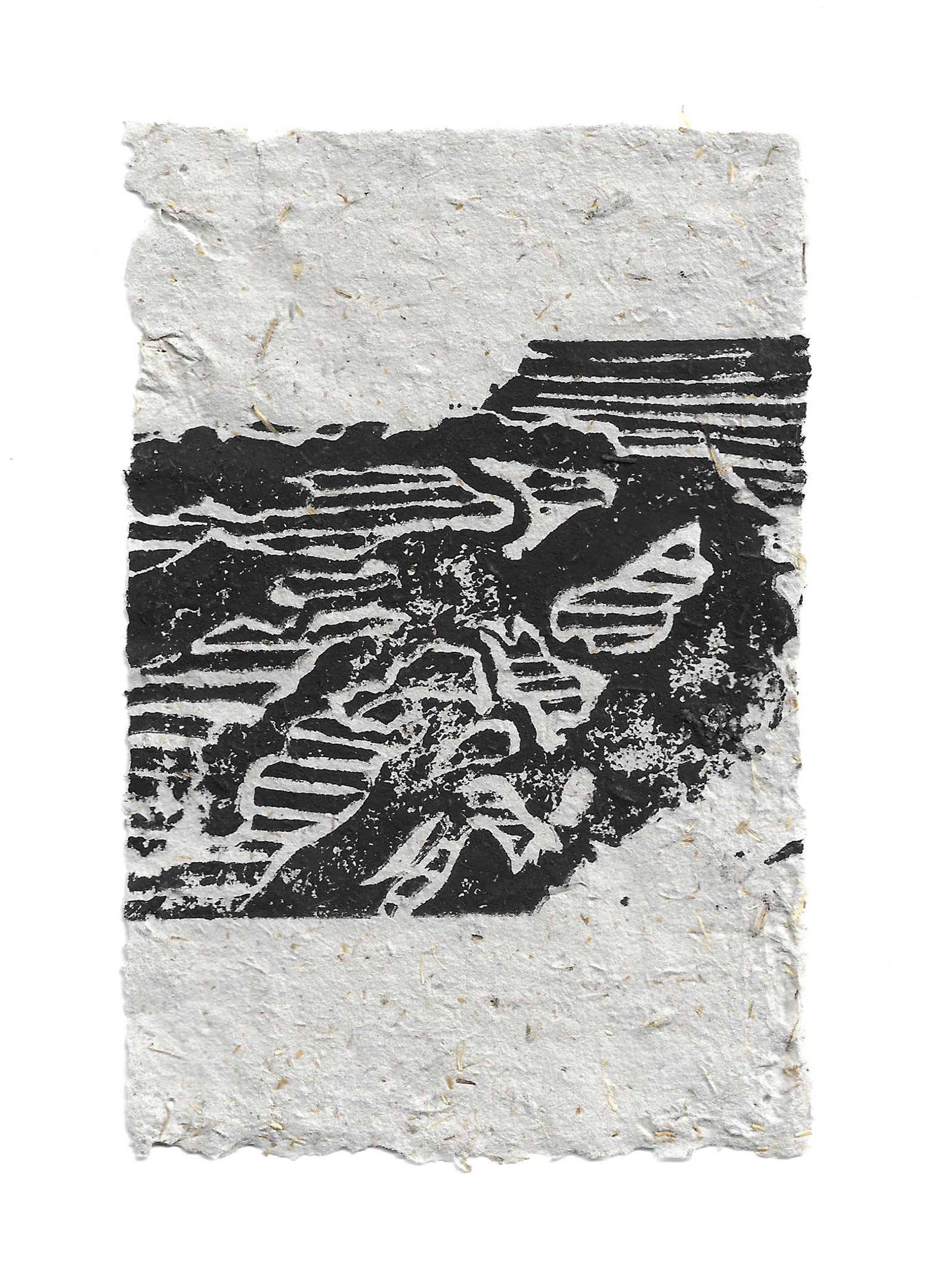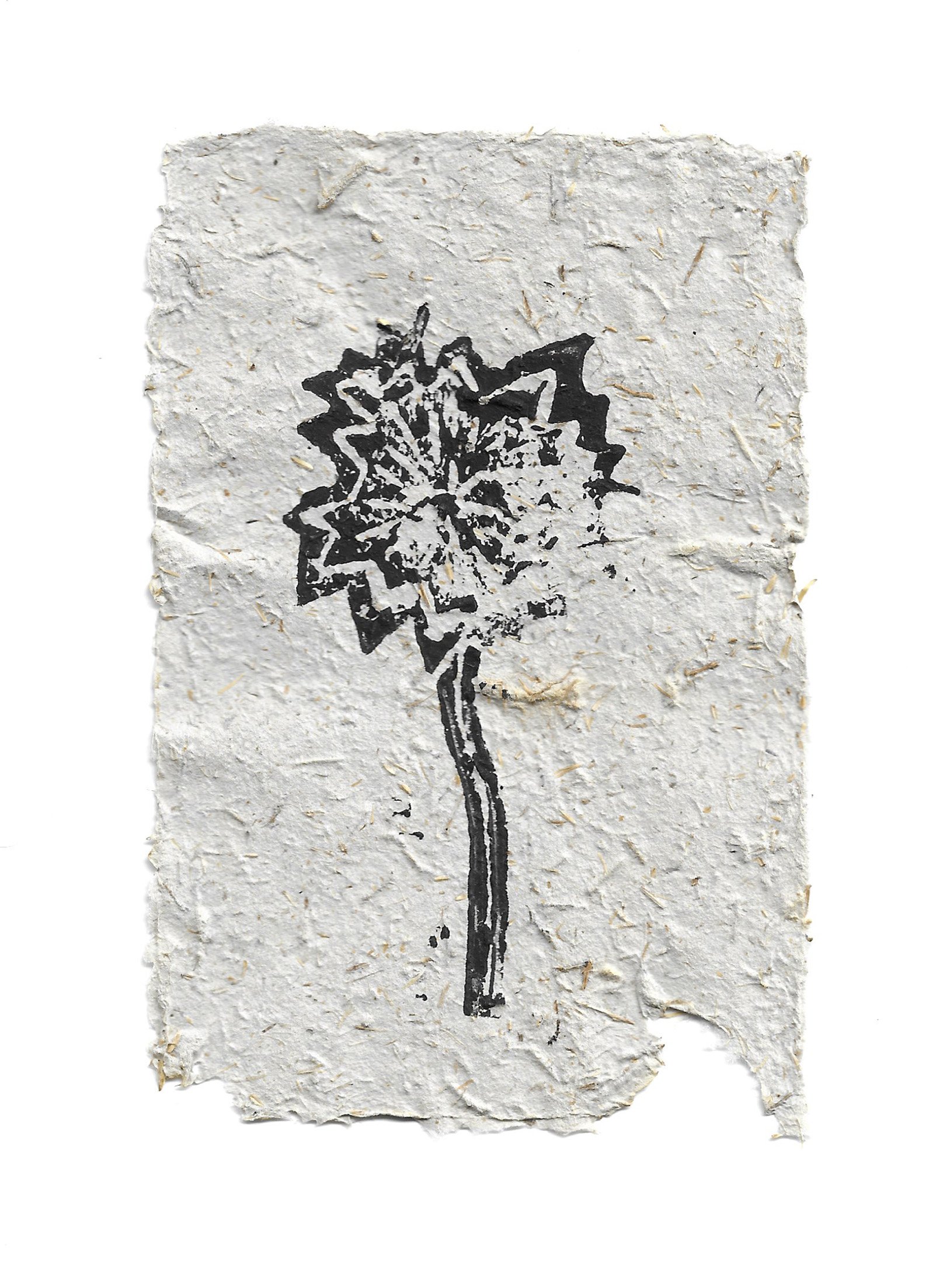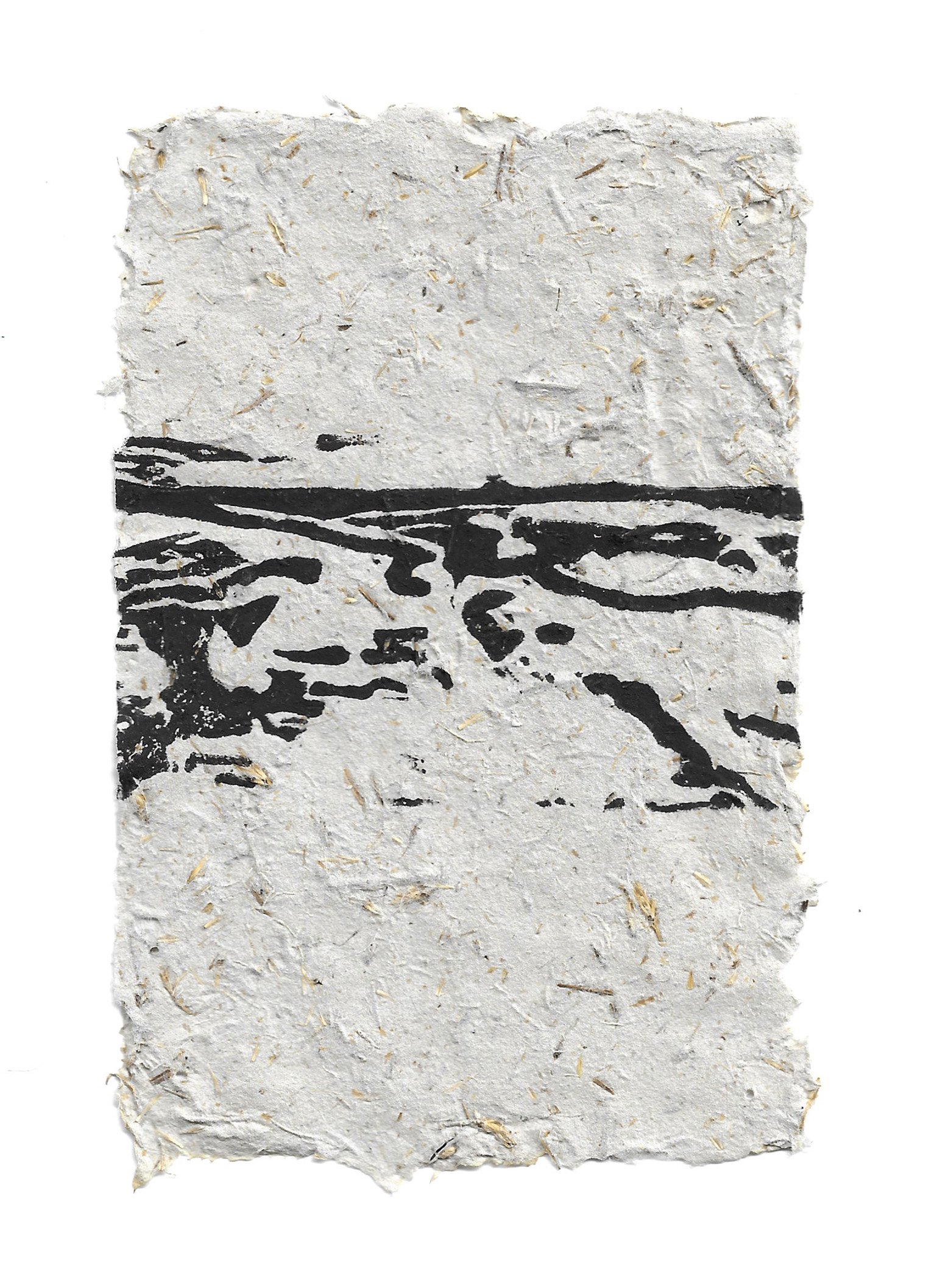SARAH ISRAELSEN (she/her)
Design SOphomore / des 3515 design research studio 1
SPRING 2023
STANSBURY ISLAND PRINTS
The prompt for this exercise was to conduct research through design by creating a land response. While visiting Stansbury Island, I used a variety of methods, including drawing and photography, to document the land and experience. I also gathered plants and natural elements.
Using this as an opportunity to explore my interests, I created linocut prints of scenes from Stansbury Island printed onto handmade paper created with rubber rabbitbrush collected from the island.
I began by boiling the flowers of the plant in water to extract a yellow dye. I then cut the stems and twigs into small pieces and soaked them with newspaper scraps in the dye. After soaking overnight, the mixture was blended into a pulp and mixed into water. I used a mould and deckle to lift and extract the paper. I then let the paper dry for two days. For the linocut prints, I reviewed my documentation of the island and chose 5 scenes to draw and carve into linoleum. After carving, I printed the scenes onto paper.
This process allowed me to conduct my own research into rubber rabbitbrush and allowed for reflection and recreation of the scenes from Stansbury Island. I was able to expand my skills and explore my interests. It is an experience transformed into a physical artifact.
PERMISSION TO PLAY
“Permission to Play” looks into stereotypical gender play/toys and the common discouragement and disapproval of boys engaging in counter-stereotypical gender play. A design opportunity is identified in response to this phenomenon.
Across studies covering children, gender, and play, there is a recurring observation that boys who engage in counter-stereotypical gender play and behavior are criticized by their peers, teachers, and parents at higher rates than girls. This leads to a disparity in children’s options for play and interests, which influence their development and understanding of self.
The identified design opportunity is to design a space that gives preschool-aged boys permission to play with counter-stereotypical gender toys and engage in counter-stereotypical gender activities. This would involve the design of a system and supporting space. The system is a toy rotation that would influence children to play with a variety of toy types. For one day to a week, teachers would only put dolls in the play area. The teacher would encourage the children, especially boys, to play with what is out. The toys would continually be switched out to allow for the exploration of a variety of toys.








